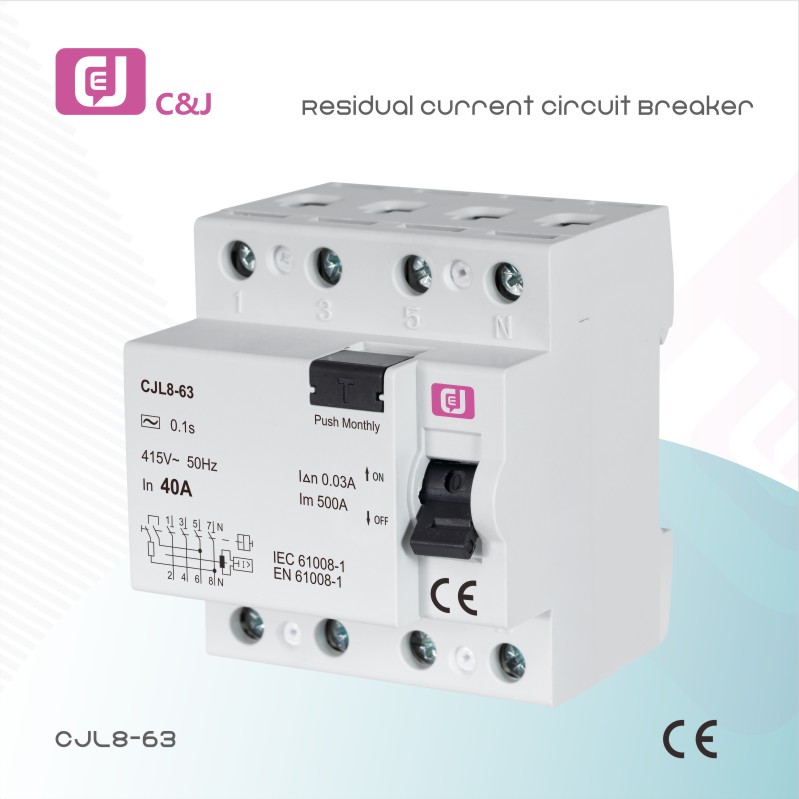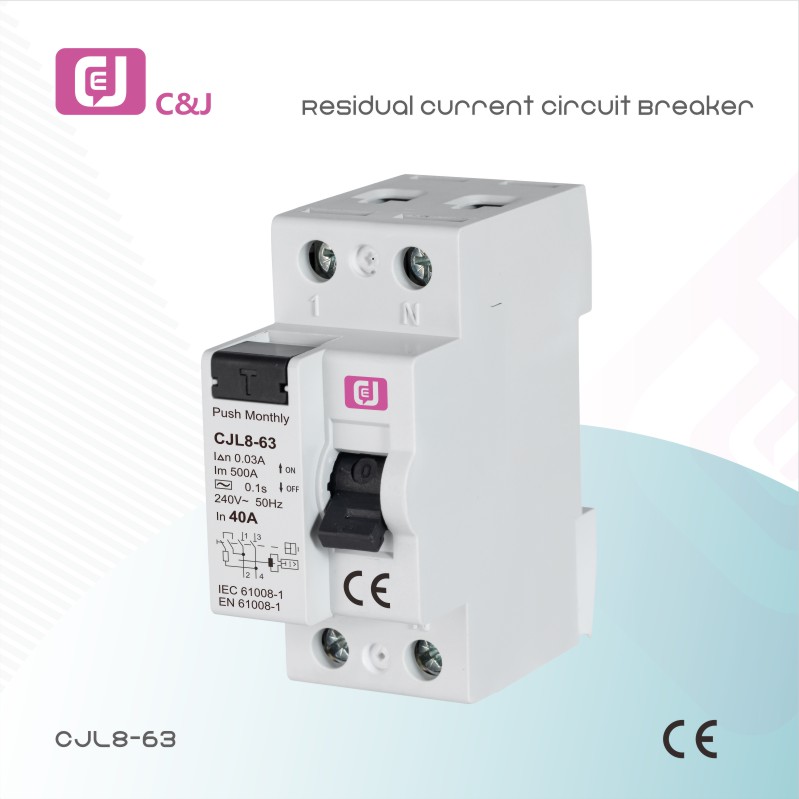Understanding RCCB: Residual Current Circuit Breaker
In the world of electrical safety, residual current circuit breakers (RCCBs) play a key role in protecting people and property from electrical hazards. These devices are designed to prevent electric shock and reduce the risk of electrical fires caused by ground faults. This article will delve into the function, importance, and applications of RCCBs.
What is RCCB?
An RCCB (Residual Current Circuit Breaker) is an electrical device that interrupts an electrical circuit when it detects an imbalance between the live (phase) and neutral wires. This imbalance indicates current leakage to ground, which can be caused by wiring errors, insulation damage, or accidental contact with live parts. The RCCB continuously monitors the current flowing through the circuit. If the detected current difference exceeds its rated sensitivity (typically 30mA for personal protection), it trips within milliseconds and disconnects the power supply.
How does RCCB work?
An RCCB operates on the principle of differential current. It consists of an iron core and two coils: one for the live wire and one for the neutral wire. Under normal circumstances, equal currents flow through the two wires, and the magnetic fields generated by the coils cancel each other out. However, if a fault occurs, such as someone touching the live wire, current leaks to ground, creating an imbalance. This imbalance generates a magnetic field that triggers the tripping mechanism, opening the circuit and preventing potential damage.
The Importance of RCCB
The importance of RCCBs cannot be overstated. They are a critical line of defense against electric shock, which can cause serious injury or even death. Safety statistics show that a large proportion of electrical incidents are caused by ground faults, making RCCBs essential in residential, commercial, and industrial settings.
RCCBs also play a vital role in preventing electrical fires. Faulty wiring or appliances can cause electrical leakage, which, if undetected, can lead to overheating and fire. RCCBs trip when they detect a fault, helping to mitigate these risks and protect life and property.
Application of RCCB
- Residential Buildings: In residential buildings, an RCCB is installed at the main distribution board to protect all circuits. RCCBs are particularly important in areas with high humidity, such as bathrooms and kitchens, where the risk of electric shock is higher.
- Commercial premises: Businesses often use residual current circuit breakers to protect employees and customers. They are essential in places where electrical appliances are frequently used, such as restaurants, workshops, and retail stores.
- Industrial environments: In factories and industrial plants, RCCBs protect machines and workers from electrical faults. They are crucial in environments where heavy machinery operates, as the risk of electrical accidents is much higher.
- Outdoor Installation: RCCBs are also used in outdoor electrical installations such as garden lighting and swimming pools where the risk of electric shock is increased due to the presence of water.
In summary
Simply put, residual current circuit breakers (RCCBs) are an indispensable component of modern electrical systems. They detect and disconnect faulty circuits, protecting people from electric shock and preventing potential electrical fires. As our reliance on electricity in our daily lives grows, understanding and using RCCBs will remain a fundamental aspect of electrical safety. Whether in domestic, commercial, or industrial settings, RCCBs provide effective protection against electrical hazards, ensuring a safer future for all.
Post time: Sep-08-2025



